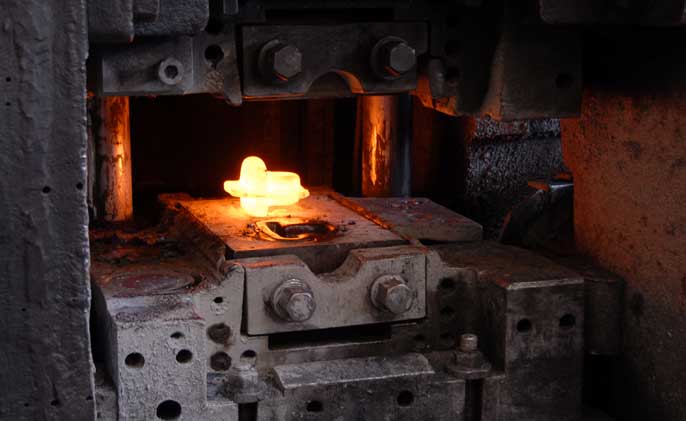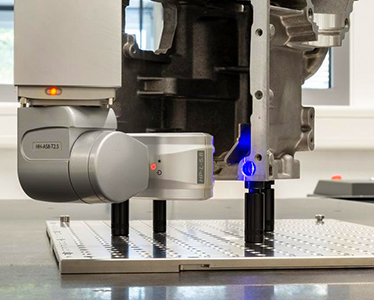Some knowledge of die forging
2023-07-06
Maple machinery in the experienced forging technology, some of the knowledge about forging
The purpose of heating before forging is to improve metal plasticity, reduce deformation resistance, make it easy to flow forming and obtain good post-forging structure.
Heating method before forging: flame heating, electric heating. Flame heating: The use of fuel combustion in the flame heating furnace to produce high temperature gas containing a lot of heat energy, through convection, radiation to the heat transfer to the surface of the billet, and then from the surface to the center heat conduction to the metal billet heating. Convective heat transfer (600~700℃) : Through the continuous flow of flame around the billet, with the help of high-temperature gas and the billet surface heat exchange, the heat transfer to the metal billet. Radiant heat transfer (700~800℃) : The heat energy is converted into radiant energy through high temperature gas and furnace, and the radiant energy transmitted by electromagnetic wave is absorbed by the metal billet, and the radiant energy is converted into heat energy and the billet is heated. Electric heating: A method of heating a material by converting electrical energy into heat. Induction electric heating, contact electric heating, resistance furnace heating, salt bath furnace heating.
The influence of forging on metal properties: when the ingot is drawn, the strength index σ changes little with the increase of forging ratio, while the plasticity and toughness indexes δ, ψ and α change greatly. When the forging ratio is about 2, the longitudinal and transverse mechanical properties are significantly improved, when the forging ratio is equal to 2~5, the fiber tissue begins to gradually form, and the mechanical properties appear different. When the forging ratio exceeds 5, a uniform fiber structure will be formed, and the longitudinal performance will no longer be improved, and the transverse performance will continue to decline. ,
The advantages of forging: 1, higher productivity, 2, forging shape is more complex, dimensional accuracy and surface finish is higher, 3, forging machining allowance is smaller, material utilization is higher, 4, can make the streamline distribution more complete and reasonable, so as to further improve the service life of parts, 5, the production process is simple, labor intensity is smaller than free forging, 6, forging cost is lower.
Die forging according to the equipment process classification: hammer die forging, crank press die forging, flat forging machine die forging, screw press die forging, hydraulic press die forging, high-speed hammer die forging, other special equipment die forging.
Die forging is classified according to the shape of the forging and the axis direction of the blank: round cake, long axis (straight long axis, bending axis, branch bud, fork)
Determine the parting position principle: to ensure that the shape of the forging is as much as possible as the shape of the part, and the forging is easy to remove from the forging die slot, the parting position of the forging should be taken as far as possible in the position with the largest horizontal projection size.
When forging on the hammer, the metal flow four stages: 1, free deformation or upsetting deformation process, the required deformation force is not large; 2, the formation of burring process, the required deformation force is significantly increased; 3. In the process of filling the groove, the deformation resistance rises significantly, and the required deformation force rises sharply; 4. The final stage of forging foot or hitting, the maximum hammer force required.
The role of rough groove and rough edge: 1, to promote the groove to be filled; 2, accommodate excess metal; 3. Buffer hammering. When to add pre-forging (good or bad) : The role of pre-forging is to further deform the billet after the billet, to ensure that the final forging is full, no folding, cracks, or other defects of high-quality forgings. It helps to reduce the wear of the final forging groove and increase the service life. On the other hand, preforging also brings adverse effects, such as increasing the flat size of the die forging and reducing productivity, especially because the die forging center can not coincide with the center of the groove, resulting in increased displacement, reducing the dimensional accuracy of the forging and affecting the working life. Pre-forging has advantages and disadvantages, so it is reasonable to use pre-forging only when the shape of the forging is complex, such as connecting rod, fork, blade, etc., forming is difficult, and the production batch is large.
























































